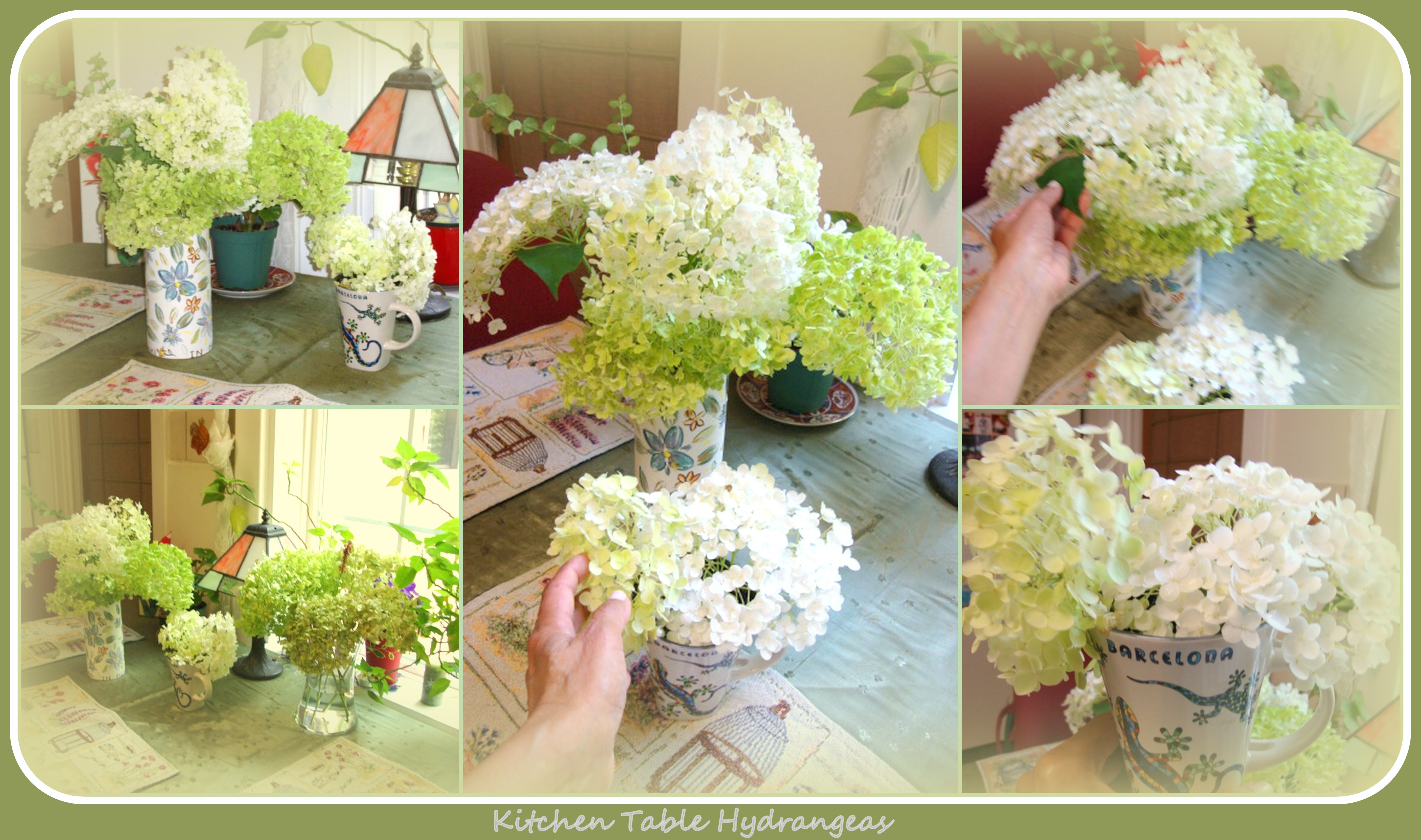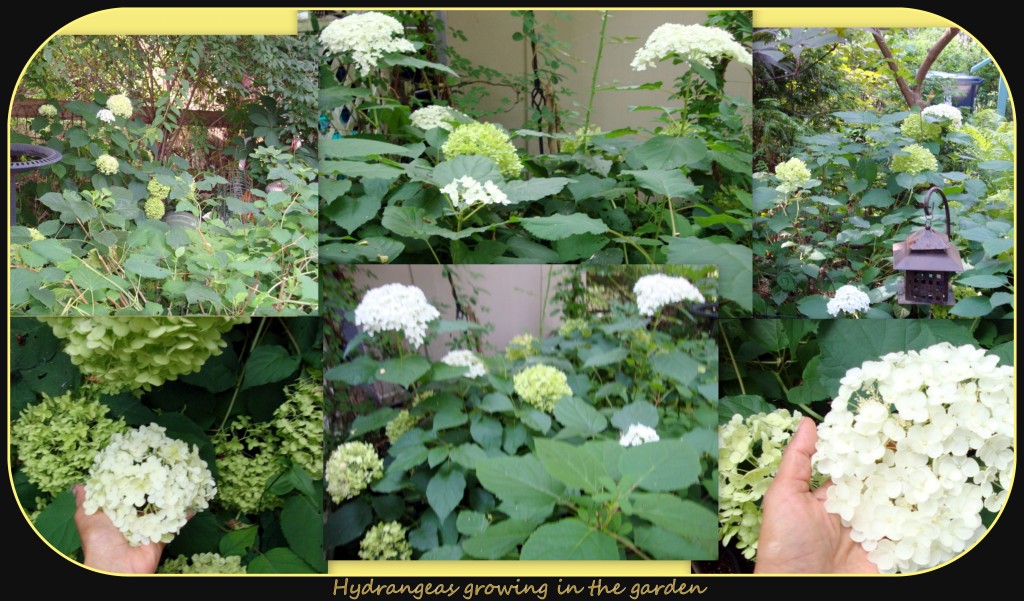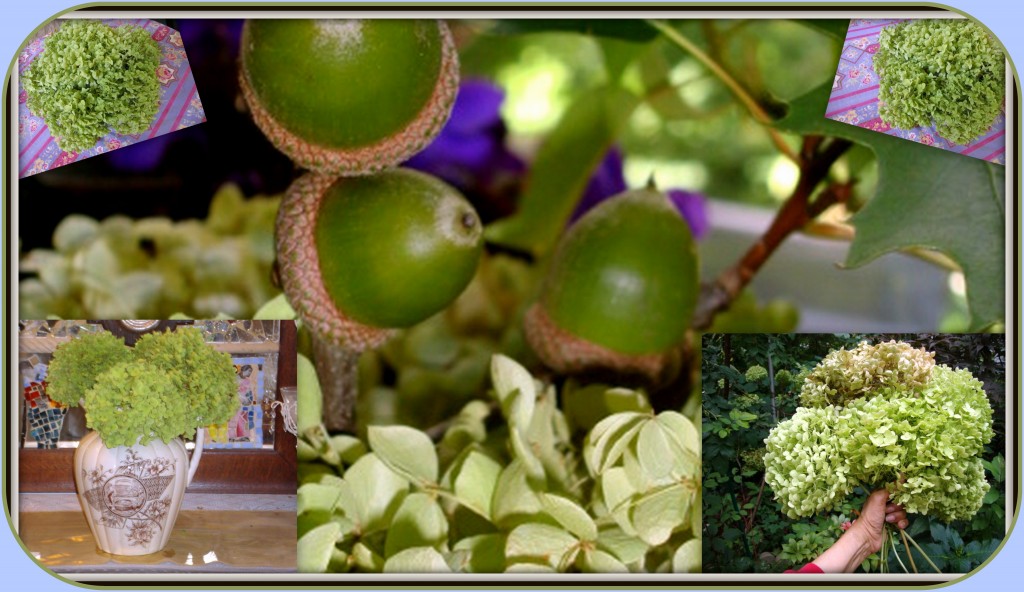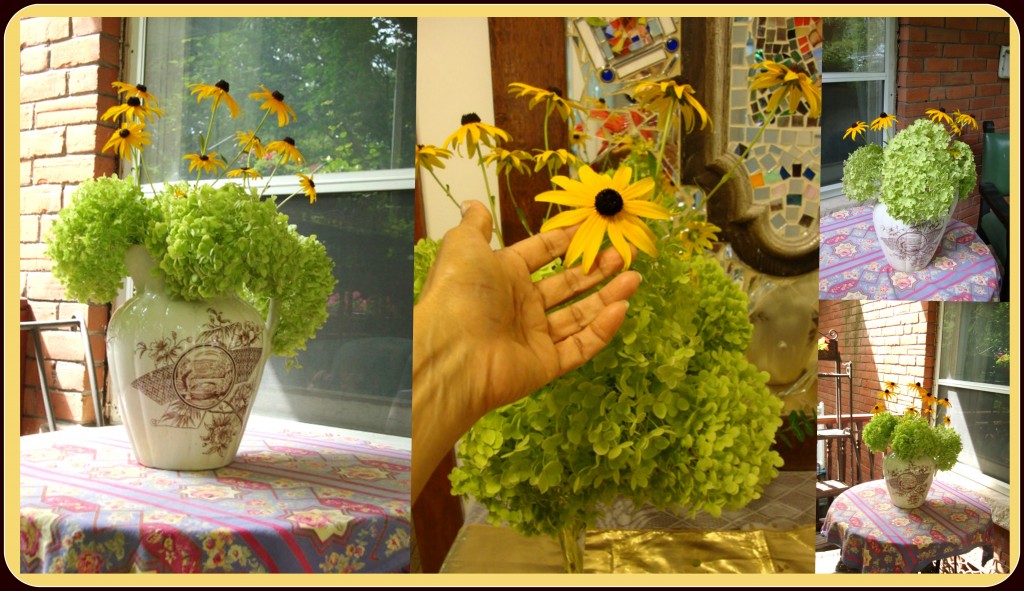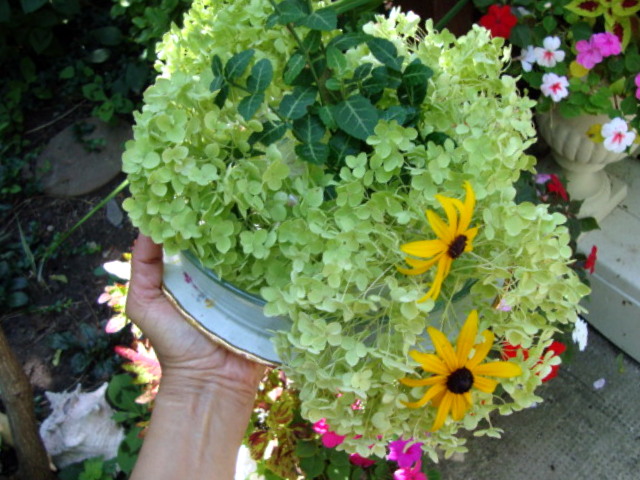
Hydrangeas are so beautiful – even when they are all by themselves. Our garden is filled with hydrangeas and my favorite summer activity is to go into the garden, cut a few stems and arrange them to beautify the home and porch. “Each of us is an artist of our days; the greater our integrity and awareness, the more original and creative our time will become.” (John O’Donohue) I’m hoping that my time here will become more and more of a creative endeavor – the enjoyable and fun kind. There’s no competition here because the hydrangeas are so beautiful!
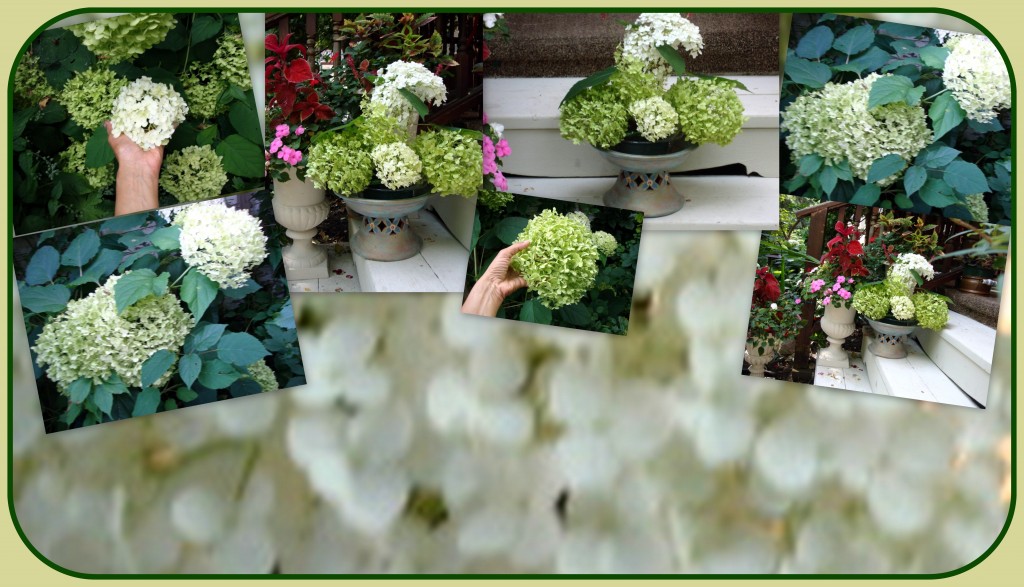
Our hydrangeas are white in July, but by the time August comes , they are mostly all green.
“The desire to create is one of the deepest yearnings of the human soul. No matter our talents, education, backgrounds, or abilities, we each have an inherent wish to create something that did not exist before. Creation brings satisfaction and fulfillment. We develop ourselves and others when we take organized matter into our hands and mold it into something of beauty.” (Dieter F. Uchtdorf)

As soon as I put hydrangeas on the coffee table, Cali jumps right up and starts smelling them, walking around them, and sitting on the table with them. She too loves hydrangeas.
Flowers… are a proud assertion that a ray of beauty outvalues all the utilities of the world. (Ralph Waldo Emerson)
“The actual flower is the plant’s highest fulfillment, and are not here exclusively for herbaria, county floras and plant geography: they are here first of all for delight.”
– John Ruskin
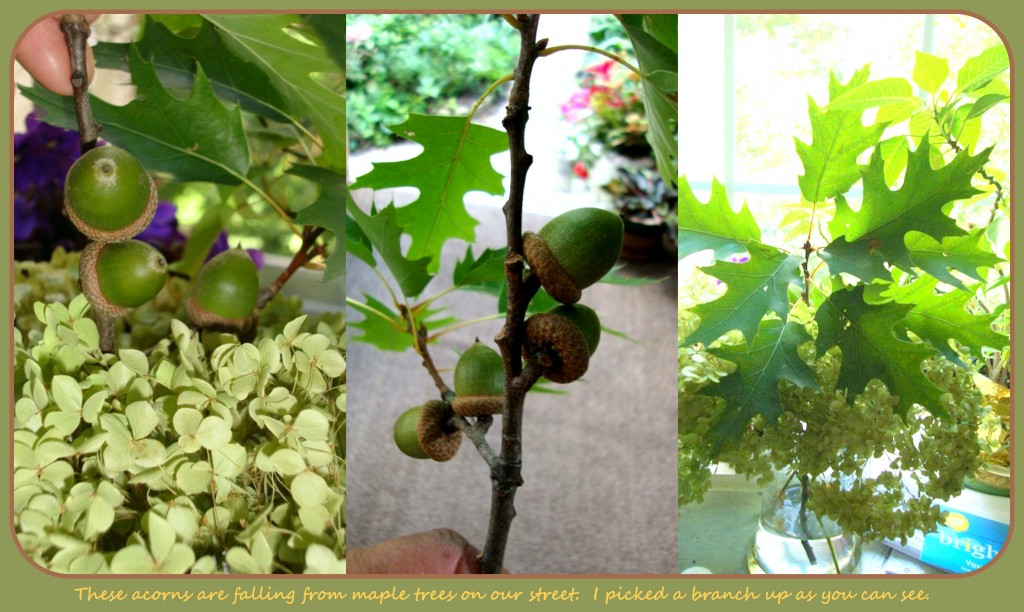 The sidewalk and front garden are a big mess this time of year with all the branches from the maples falling. They have acorns on them and as people go by, they step on them. We step on them too. There’s a lot of sweeping up to do. It’s a jolly good time for the squirrels who are storing them for the winter. They hide them and not all are found. Those that are deeply buried grow into big oak trees. “Oak trees come out of acorns, no matter how unlikely that seems. An acorn is just a tree’s way back into the ground. For another try. Another trip through. One life for another.”– Shirley Ann Grau
The sidewalk and front garden are a big mess this time of year with all the branches from the maples falling. They have acorns on them and as people go by, they step on them. We step on them too. There’s a lot of sweeping up to do. It’s a jolly good time for the squirrels who are storing them for the winter. They hide them and not all are found. Those that are deeply buried grow into big oak trees. “Oak trees come out of acorns, no matter how unlikely that seems. An acorn is just a tree’s way back into the ground. For another try. Another trip through. One life for another.”– Shirley Ann Grau
ADDING OTHER FLOWERS
The flowers that I added here are called “Black Eyed Susan.” If you’re using flowers from your own garden, it’s possible to add anything that is available and plentiful. The addition of these flowers give the arrangement added color, height, and fullness.
 The container for my flower arrangements here is a pyrex dish that I use when I make flan. I started out with two hydrangea stems and added two Black-Eyed Susans. With a little bit of greenery added, that could be a simple arrangement. Hydrangea stems were added to fill the whole container. One, two, and then many Black-Eyed Susans were added. Your arrangements can be as simple or as fussy as you want them to be depending on the occasion and where you intend to place the blooms.
The container for my flower arrangements here is a pyrex dish that I use when I make flan. I started out with two hydrangea stems and added two Black-Eyed Susans. With a little bit of greenery added, that could be a simple arrangement. Hydrangea stems were added to fill the whole container. One, two, and then many Black-Eyed Susans were added. Your arrangements can be as simple or as fussy as you want them to be depending on the occasion and where you intend to place the blooms.
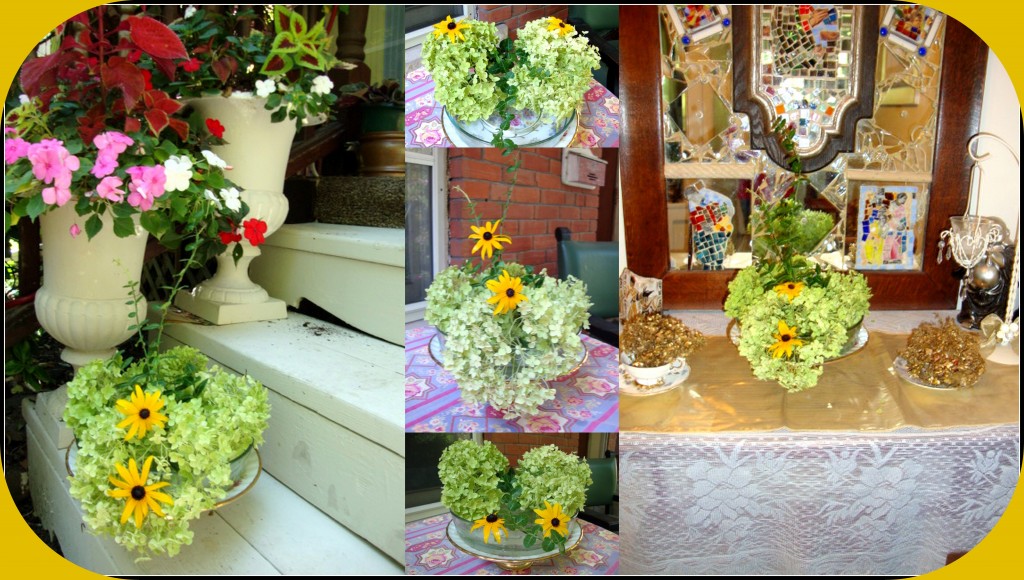 In this collage, the pyrex dish has been set on a cake stand and this shows the visual effect of having a raised arrangement. Pretty simple and lots of fun!
In this collage, the pyrex dish has been set on a cake stand and this shows the visual effect of having a raised arrangement. Pretty simple and lots of fun!
“Arranging a bowl of flowers in the morning can give a sense of quiet in a crowded day – like writing a poem or saying a prayer.” (Anne Morrow Lindbergh)
Hope you enjoyed the collages!

